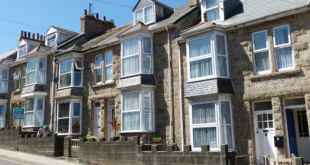If you love the tranquillity and allure of the countryside and the fun of the city, you’re not alone. There’s certainly something to be said about the fresh air, privacy and expansive greenery of living in a rural area, but cities tend to offer easier access to a wider range of amenities and better transport links.
However, it needn’t be a trade-off. The health and wellness gurus at Made4 Vitamins have analysed which of the UK’s 25 largest cities will allow you to live the healthiest lifestyle, considering factors such as air quality, walkability, access to green spaces, sunshine, life expectancy and more. If you’re looking for the charm of the countryside with the hustle and bustle of the city, then don’t miss out – now, you can have both.
Key Findings:
- Of the top 25 cities in the UK by population, Edinburgh offered the best air quality, followed by Leicester and Birmingham.
- Bradford offered the worst air quality, followed by Brighton and London.
- Edinburgh also offered the greatest amount of green space per person, with 233.3m2 of green space available per head.
- Sheffield ranked second in green space per person with 155m2 of green space per head.
- Edinburgh also ranked highest in walkability, followed by Sheffield and London.
- Of the top 25 cities, Plymouth ranked highest in the UK (2nd) in terms of sunlight per year, with Bristol coming in eighth.
- Cities in the north of the UK were more likely to experience vitamin D deficiencies than cities in the south.
- Cities in the north of the UK tended to have lower life expectancies than cities in the south.
Air Quality – Edinburgh
Air quality can have a huge impact on your health and wellbeing – fresh air has been associated with a healthy digestive system, improved blood pressure and heart rate and more, whilst polluted air can result in various cardiovascular and respiratory diseases and cancers.
As such, the World Health Organisation has established guidelines for acceptable air pollution levels, based on the concentrate of PM2.5, fine particulate matter of 2.5 micrometres or less in diameter, in the air.
Of the top 25 most-populous cities in the UK, Bradford ranks worst for air quality according to IQ Air, with their 2021 air quality exceeding the WHO guideline by 2-3 times. The second-worst UK city by air quality was Brighton, followed by London, Bristol, and Belfast.
Meanwhile, Edinburgh offered the best air quality of the top-25 cities, followed by Glasgow, Leicester, and Birmingham.
Green Spaces – Edinburgh
Green spaces add a charm and freshness to any city, breaking up the monotony of skyscrapers and tower blocks. Not only that, but they create a safe space for community and exercise, for kids to play and to meet friends in.
According to Natwest’s Green Cities report, Edinburgh is the number one city in the UK in terms of green space. The city offers a massive 233.3m2 of green space for each person living there, beating out second-placed Sheffield who boast 155m2 of green space per head. Public-access parks and green spaces constitute a whopping 49.2% of the city, meaning that there are plenty of great options when it comes to getting a bit of fresh air.
Sheffield also ranked well when it came to other metrics such as green energy production, residents’ energy consumption and the percentage of car owners with ULEZ vehicles, and topped the NatWest study’s list of Greenest Cities. At the other end of the list was Wolverhampton, where there was just 25m2 of green space to each person, and high numbers of people commuting by car.
Walkability – Edinburgh
If a city is lacking proper infrastructure for pedestrians, you’re much more likely to get into unhealthy habits, such as driving or taking public transport everywhere. Luckily, that problem is much more common in the US, where cities fail to provide proper pedestrian areas or walking routes.
Edinburgh topped the list of UK cities for walkability too, no doubt helped in part by the sheer number of green spaces on show throughout the city. A survey by Living Streets quizzed residents on how they felt about their city’s walkable access to shops and parks, the quality of pavements and streets, and whether they felt safe walking there.
Again, Edinburgh ranked highest for walkability, followed by Sheffield, with London in third place. 82% of respondents found Edinburgh’s streets to be of good quality, with 67% of respondents finding it easy to reach a park on foot and 65% finding it easy to get to the shops on foot.
Sunlight – Plymouth
Though the UK’s sunniest city, Chichester, falls outside the top-25 population ranking, two of the UK’s most populous cities make the top 10 – Plymouth and Bristol. Plymouth was ranked the UK’s second-sunniest city in the country in a 2018 survey, having enjoyed 1730.1 yearly hours of sunshine. Meanwhile, Bristol took eighth position on the list with 1627 yearly hours of sunshine.
Ensuring you get enough sunlight can be crucial for your health – a failure to receive enough sunlight can result in an insufficiency or even deficiency of vitamin D. A 2021 study backed this up, with areas in the north of England most likely to suffer from insufficient vitamin D. Scotland was the most likely area for this to happen, though residents in London were also likely to have lower vitamin D levels.
Life Expectancy – Westminster
When it comes to judging cities or even regions on their life expectancy, it can be a little trickier to gauge due to disparities that exist in each city. For example, there are significant fluctuations within London when comparing areas such as Kensington and Newham. The highest life expectancy in the country, according to data from 2017-19, is from the London borough of Westminster, where men tended to live to around 85, and women to 87.
Overall, however, data highlights the fact that places in the south of the UK tend to have higher life expectancies than places in the north. Though these figures vary across London, the capital city as a whole boasted approximate life expectancies of 81 for men and 85 for women according to figures from 2017-2019.
Meanwhile, Newcastle and the surrounding areas had the lowest life expectancies in England. Many other cities north of the Watford Gap had a noticeably lower life expectancy than London, including Manchester, Birmingham and Leeds, where life expectancy tended to be around 78 for men and 82 for women. These numbers were lower still in Scotland, where life expectancy was 77 for men and 81 for women.
Though the life expectancy is lower in Scotland, Edinburgh remains a similar level to Manchester, Birmingham and Leeds, and boasts significantly better walkability, access to green spaces, and better air quality – it therefore tops our list of the healthiest places to live in the UK.
Dr Bhasha Mukherjee, Medical Lead at Made4 Vitamins, commented: ‘it’s crucial that wherever we live grants us the ability to live a healthy lifestyle, whether that’s in terms of air quality or being able to exercise safely. Edinburgh’s amazing pedestrian infrastructure and expansive green spaces make living healthily a breeze, and that’s why it tops our list!’
 Homeowners Club If you are one of the 15 million homeowners in the UK, the free to join online Homeowners Club is for you.
Homeowners Club If you are one of the 15 million homeowners in the UK, the free to join online Homeowners Club is for you.








